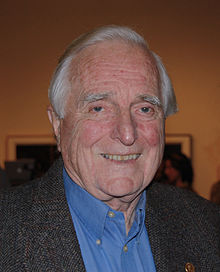This article's lead section may be too short to adequately summarize the key points. (February 2017) |


Hypertext is text displayed on a computer or other electronic device with references (hyperlinks) to other text that the reader can immediately access, usually by a mouse click or keypress sequence. Early conceptions of hypertext defined it as text that could be connected by a linking system to a range of other documents that were stored outside that text. In 1934 Belgian bibliographer, Paul Otlet, developed a blueprint for links that telescoped out from hypertext electrically to allow readers to access documents, books, photographs, and so on, stored anywhere in the world.[1]
- ^ Wright, Alex (2014-05-22). "The Secret History of Hypertext". The Atlantic. Retrieved 2020-06-10.
© MMXXIII Rich X Search. We shall prevail. All rights reserved. Rich X Search
